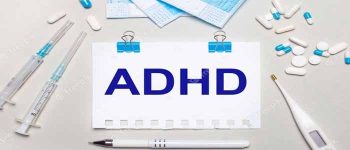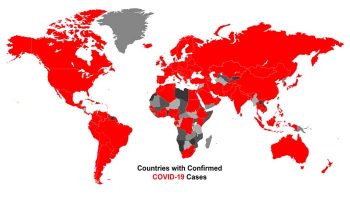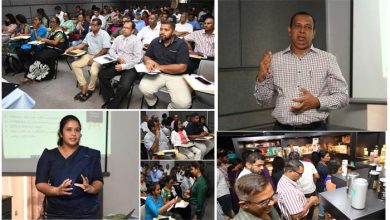
By Dr. Marcel de Roos (Psychologist PhD, the Netherlands).
The line “Teach your children well”; from the iconic song of Crosby, Stills, Nash & Young is very applicable to the so called “ADHD”-symptoms. Please remember, ADHD (or for example “borderline personality disorder”) is just a label for certain symptoms! And there is no indication that these symptoms have ANYTHING to do with a “brain dysfunction” or a “deficit of a transmitter in the brain”. Also, many health professionals make the classic mistake of reification: they speak about certain symptoms that children exhibit, BECAUSE they suffer from “ADHD”. But ADHD is just a definition, an abstraction without a real entity, and there exist no “subtle signs” of it.
For teachers the perfect class is a concentrated, quiet and obedient one. Nowadays, when children stand out by what used to be called naughty, rebellious and boisterous behaviour, it is much easier than before for teachers to have these children drugged with for example Ritalin or Concerta (psycho-stimulant medications). For psychiatrists, jotting down abbreviations like ADHD, PDD-NOS and ADD and subsequently prescribing drugs has become routine.
Is there a psychiatric epidemic or is there something else going on? Leading American psychiatrists think that ADHD (supposedly an attention and hyperactivity disorder) is severely over-diagnosed; it’s a false epidemic. Before 2000, only very serious cases were labeled with this diagnosis and only people who really needed it, were allowed to receive medication. As a consequence of the less stringent definition after 2000, the diagnosis of ADHD has increased spectacular. Everybody knows now somebody with ADHD.
Another reason might be that qualities that used to be attributed typically to boys such as an urge for noisiness, action, and forcefulness were formerly accepted, but are now regarded as a problem, especially at schools. It appears that not the boys, but the educators have changed. Boys are in essence the same as before, but the school system has become more feminine and looks upon their abundance of physical energy and enthusiasm as being an issue.
For concentration problems without hyperactivity, a separate category was devised called ADD (Attention Deficit Disorder). Therefore, many girls and women were included into the diagnostic criteria. PDD-NOS (Pervasive developmental disorder not otherwise specified) was brought in as a kind of residual category for people who don’t quite fit into other more specific categories.
It is to be expected that the existing criteria will be eased up more so that an increasing amount of people will be labeled as suffering from a “mental illness” with all the dire consequences. The pharmaceutical industry has maintained strong ties with the psychiatric community and they have jumped at this opportunity. Big Pharma’s marketing machine is working full time in trying to sell the new drugs.
New target groups are continuously defined. At first it were predominantly the overactive little boys which were not concentrated enough. Now the dreamy girls are coming into the picture. They are diagnosed with ADD and that is supposed to be treated with medication too. Finally it’s the turn of the grown-ups; 5% of the adult population is said to be suffering from ADHD.
Using medications for ADHD involves a number of risks. The most important ones are decreased appetite and cardiovascular complaints. But also anxiety, stomach problems, dizziness, tics, skin problems and bruising are named. Less common, but potentially lethal results from taking these pills is, that they can cause suicidal thoughts and psychosis.
Research about the long-term effects of these medications is almost non-existent. There is only one such study, the so called MTA (The multimodal treatment of ADHD), sponsored by the National Institute of Mental Health in the USA. It shows that after two years, there is no difference between groups of children who do and don’t use medication. Despite this and other critical studies, the use of ADHD medication has skyrocketed.
The scary thing is that we don’t know what the precise working is of the medication in our children’s brains and we are also in the dark about the long-term side-effects. It’s comparable to the enthusiasm with which Valium was introduced in the 1960’s. It was only later that the severe adverse effects became known.
ADHD (if it exists) is nothing more than a description of a number of behaviour symptoms. ADHD is not a mental disorder that causes you to be badly concentrated and noisy. The thinking about ADHD becomes problematic when the child is not seen as a person in relation to its environment (for example family, school, and neighbourhood), but only as an individual without a context. You just tally up some symptoms and voila, there you have ADHD! It becomes dramatic when you realise the enormous amount of children that are given potentially dangerous drugs without proper effect evaluation.
It’s important to invest in quality education/schooling and in quality day-care facilities, and parents should have the time to raise their children. There lies the key for a quality society. Raising kids is a slow process and it takes time, and this for many years. Many parents (and for single parents it’s even worse) are short of time regarding work and other commitments. Children are often put in front of the TV while their parents bicker about last night’s fight. There is a huge pressure to get high marks at school. And at school they have to sit still for hours while they are at an age when they are full of energy. School teachers are underpaid and are often underqualified to teach and guide children, school classes are too crowded to give individual attention. In a few years’ time many of these kids will have a brief chat with a psychiatrist who will be very trigger-happy to jot down (unnecessary) fancy little acronyms and abbreviations like ADD, ADHD, CD, ODD, PDD-NOS, etc.
What is needed is to stop “diagnosing” children with ADHD because they will think that there is something wrong with them. In many cases parental advice, teacher training and psychological support suffices. It’s important to create an environment that is clear, quiet and predictable. There should be clear boundaries and positive behaviour should be noted and rewarded. And only when all of this doesn’t work, then medication can be used as a last resort.






